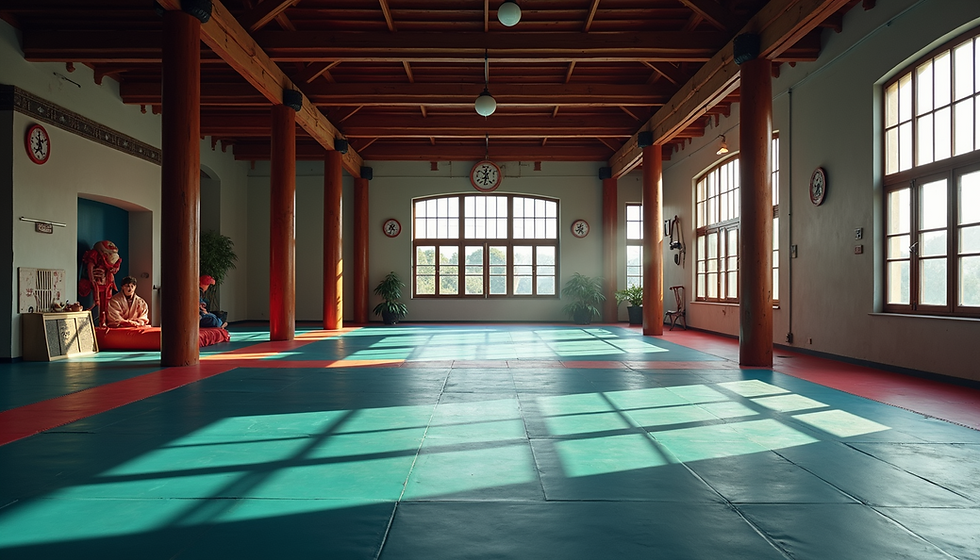Understanding Filipino Martial Arts Techniques
- Total Self Defense Team
- Sep 15
- 4 min read
When I first stumbled upon Filipino fighting techniques, I was instantly drawn to their practicality and rich history. These techniques are not just about fighting; they are about discipline, respect, and self-improvement. If you’ve ever wondered what makes Filipino martial arts so unique and effective, you’re in the right place. Let me take you through some of the essential aspects of these techniques and how they can empower you.
What Makes Filipino Fighting Techniques Stand Out?
Filipino fighting techniques are known for their fluidity and adaptability. Unlike some martial arts that focus on rigid forms, these techniques emphasize natural movement and quick reflexes. This makes them incredibly effective in real-life situations.
One of the key features is the use of weapons, especially sticks, knives, and even everyday objects. Training often starts with sticks, which helps develop coordination, timing, and precision. From there, practitioners learn to apply the same principles to empty-hand combat.
Here’s what I find fascinating:
Simplicity and efficiency: The moves are straightforward but powerful.
Versatility: You can use these techniques whether you’re armed or unarmed.
Focus on defense and counterattack: It’s not just about striking but also about reading your opponent and responding effectively.
If you want to get a feel for the art, imagine practicing with a pair of rattan sticks, learning to block and strike in a rhythmic flow. It’s almost like a dance, but with a purpose.

Exploring Filipino Fighting Techniques in Detail
Let’s dive deeper into some of the core techniques you’ll encounter. Whether you’re a beginner or just curious, understanding these basics will give you a solid foundation.
Striking Techniques
Striking in Filipino fighting techniques is all about angles and speed. Instead of swinging wildly, strikes are delivered at specific angles to maximize impact and minimize exposure.
45-degree angle strikes: These are common and effective for both offense and defense.
Double strikes: Using both hands or sticks to overwhelm an opponent.
Flow drills: Practicing continuous strikes to build rhythm and endurance.
Defensive Maneuvers
Defense is just as important as offense. Filipino fighting techniques teach you to block, parry, and evade with minimal effort.
Redirection: Instead of meeting force with force, you redirect the opponent’s energy.
Footwork: Moving quickly and efficiently to avoid attacks.
Disarms: Techniques to safely take away an opponent’s weapon.
Grappling and Joint Locks
While the art is famous for its weapon work, it also includes close-quarter combat skills.
Trapping: Controlling an opponent’s limbs to create openings.
Joint locks: Applying pressure to joints to immobilize or control.
Throws and takedowns: Using leverage to bring an opponent to the ground.
These techniques make Filipino fighting methods well-rounded and practical for self-defense.
How to Start Learning Filipino Fighting Techniques
If you’re interested in learning these techniques, the best way is to find a reputable school or instructor. Here’s what I recommend:
Look for a school that values tradition and professionalism. This ensures you get authentic training.
Start with the basics. Don’t rush into advanced moves before mastering fundamentals.
Practice regularly. Consistency is key to building skill and confidence.
Focus on safety. Use proper gear and follow your instructor’s guidance.
Be patient. Progress takes time, but every step forward is rewarding.
At Total Self Defense in Green Bay, for example, they offer classes tailored for all ages and skill levels. Their environment is welcoming and professional, perfect for families and individuals alike.

Why Filipino Martial Arts Are Perfect for Everyone
One thing I love about Filipino martial arts is how accessible they are. Whether you’re a kid, a parent, or a senior, these techniques can be adapted to fit your needs and abilities.
Builds confidence: Knowing you can defend yourself is empowering.
Improves fitness: The training is a great workout for your whole body.
Teaches respect and discipline: These values are central to the practice.
Encourages community: Training with others creates strong bonds.
Plus, the skills you learn are practical. You’re not just memorizing moves; you’re developing instincts that can protect you in everyday life.
If you want to explore more about this fascinating art, check out this link to filipino martial arts for a deeper dive.
Taking the First Step Toward Mastery
Starting your journey with Filipino fighting techniques is exciting. Remember, it’s not about being the toughest or the fastest. It’s about learning, growing, and becoming more aware of yourself and your surroundings.
Here are some tips to keep in mind:
Set realistic goals: Maybe you want to learn self-defense or just get in better shape.
Stay curious: Ask questions and seek to understand the why behind each technique.
Practice mindfulness: Martial arts is as much mental as it is physical.
Celebrate progress: Every small improvement counts.
If you’re in Green Bay and ready to start, consider visiting Total Self Defense. They’re committed to helping you learn in a supportive and honorable environment.
I hope this gives you a clear picture of what Filipino fighting techniques are all about. They’re more than just moves - they’re a way to build strength, confidence, and respect. Why not give it a try? You might just discover a new passion and a powerful skill set that stays with you for life.





Comments